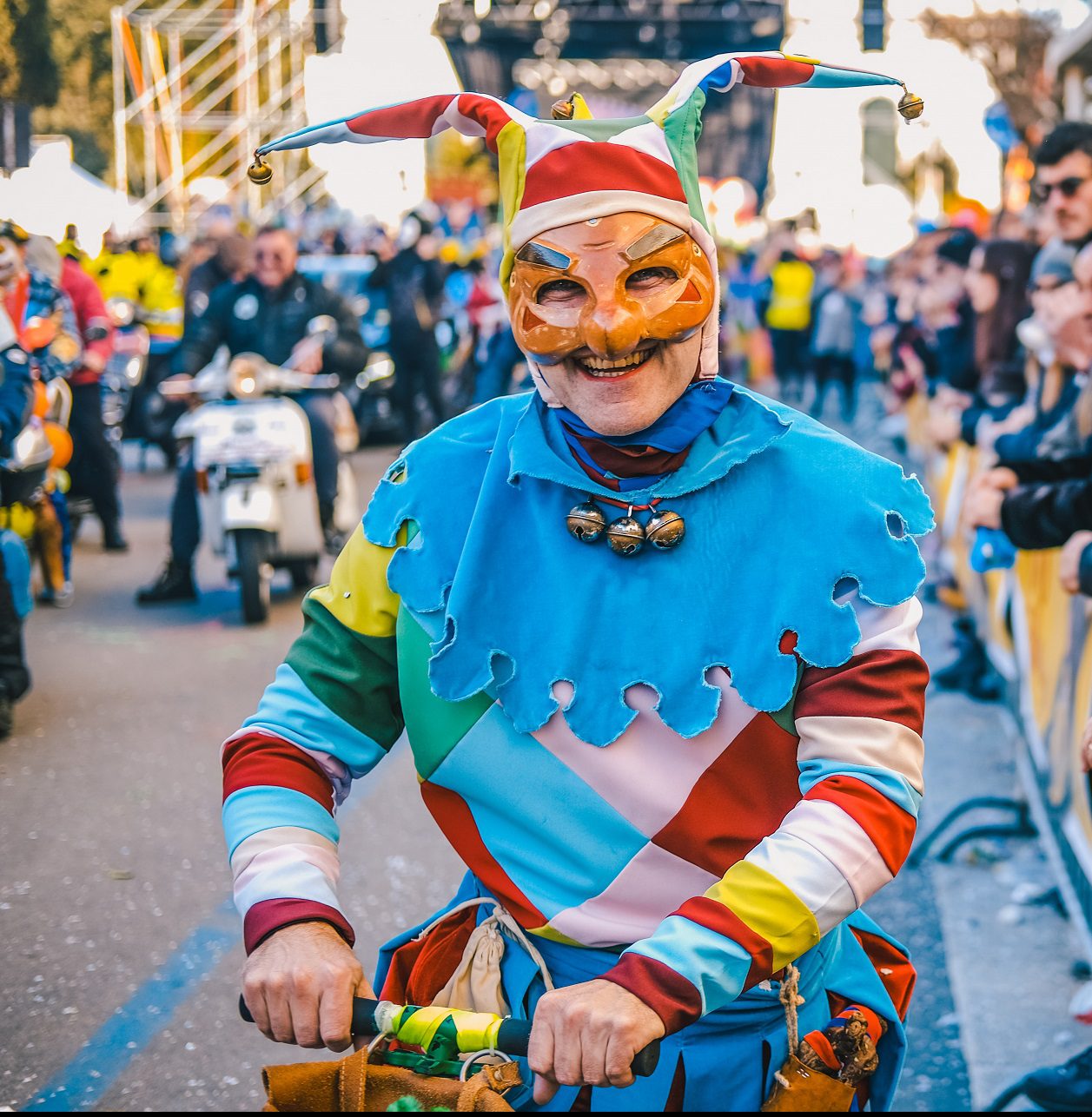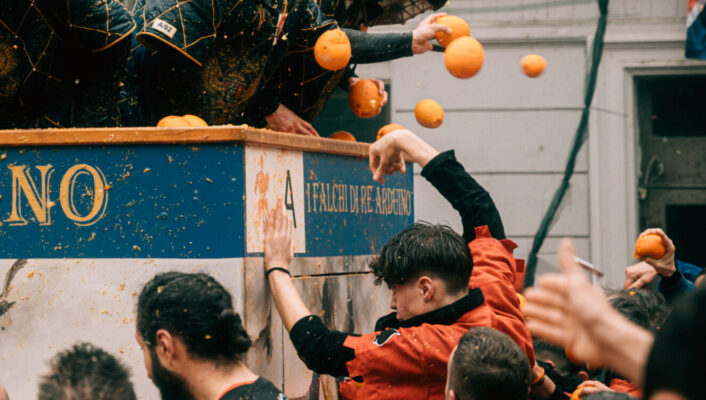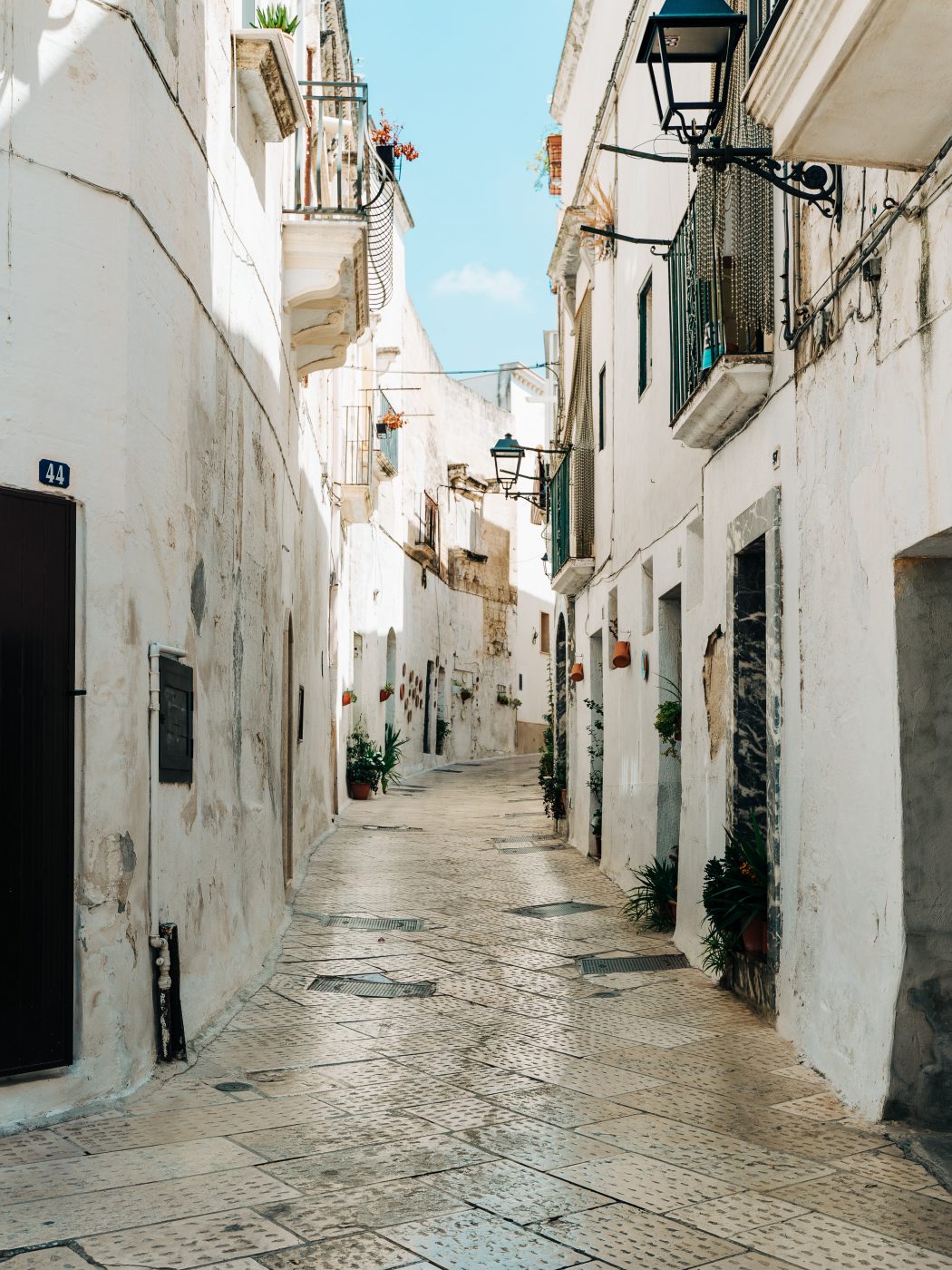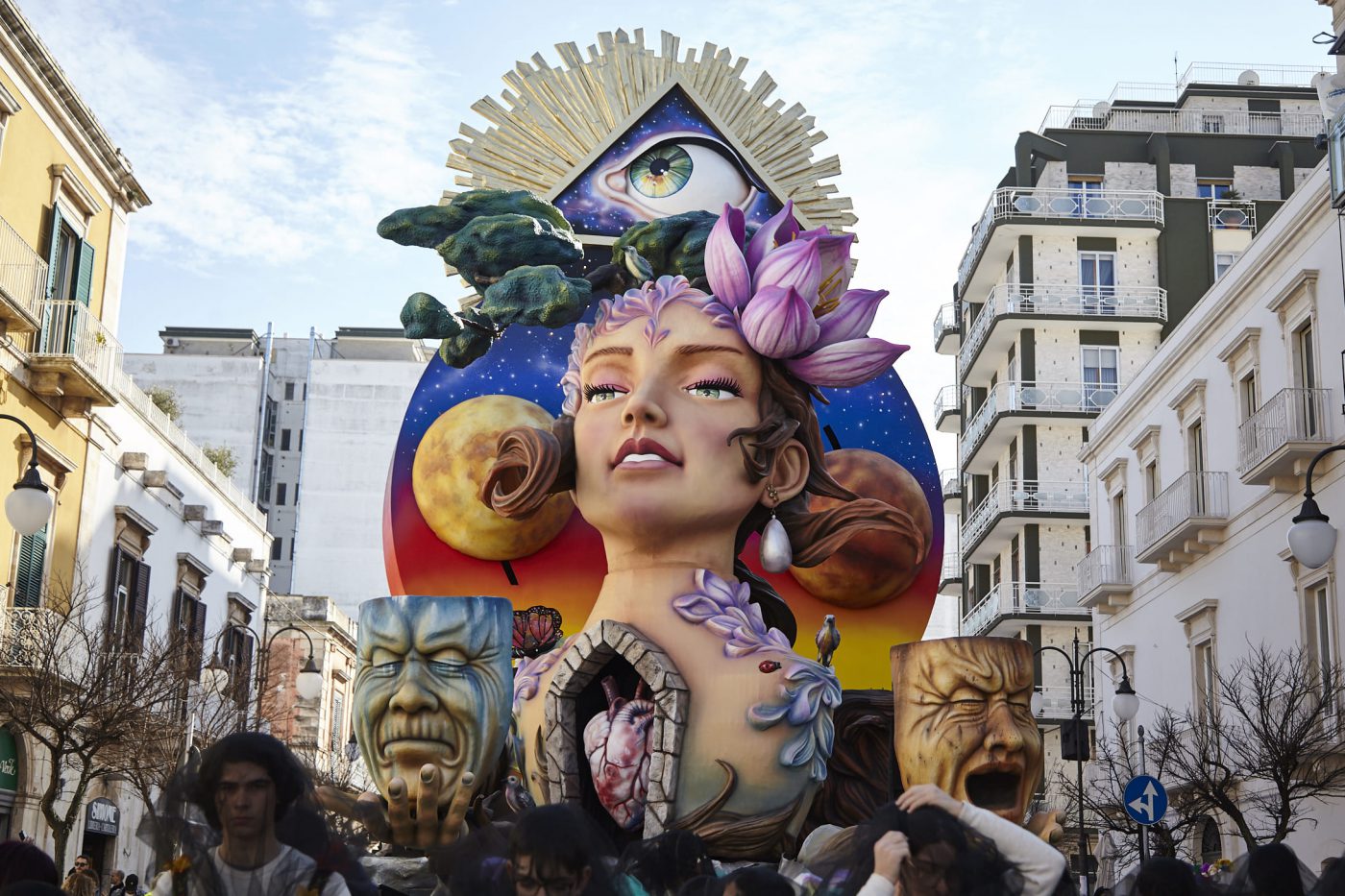If I close my eyes, I can still see it again. The main road of the town, the people celebrating, and the floats that parade in the center.
Of my childhood, honestly, I don’t have many memories. But one still alive is that of the Carnival: a rather widespread tradition in Italy that immediately brings to mind Venice but which in Puglia, my region of origin, has its symbol in Putignano, 25 minutes from the capital Bari.
I remember the parades of allegorical floats, made of paper-mâché and iron, and their funny and somewhat elusive, mysterious figures. But, in reality, the citizens of Putignano, the “Putignanesi”, teach me that Carnival is something else. The tradition of allegorical floats, in fact, was introduced very recently, in the early 1900s. The Putignano Carnival is the oldest in Europe; just this month the 627th edition should have taken place, which due to the pandemic could be postponed to Summer or Autumn, or otherwise canceled.
Personally I have always associated the Carnival with the month of February, but the Putignano Carnival actually begins on December 26th, with the “festa delle propaggini” (feast of the offshoots), which gives the celebration another record: the longest carnival in Italy.
Various stories are told about the origin of this carnival, but the most accredited shows its birth precisely on 26 December 1394, when the relics of Santo Stefano Protomartire were brought from the Abbey of Monopoli, on the coast of Puglia, to Putignano, to save them from the invasion of the Saracens. The story here is intertwined with a more worldly element: it is said that the peasants abandoned the work fields where they were engaged in grafting the vines with the offshoot technique and queued up at the procession of Santo Stefano Protomartire dancing, singing and improvising verses in the local dialect. For those less familiar with botany, offshoot is a technique in which the branch of a plant is folded and buried to make the plant propagate, giving birth to a new stem (I had to jump to Wikipedia too).
Even today, during the feast of the offshoots, groups of citizens of Putignano recall history by parading in the alleys of the historic center with peasant clothes and tools, challenging each other with “cippon“, satirical verses in the local dialect with which they make fun of politicians and city personalities. At the end of this ritual, created to regain approval of the gods for a better future and chase away evils, all citizens gather in the picturesque Piazza Plebiscito to plant the cèppone, the symbol of the festival, which in Putignanese dialect means both the vine plant and the male sexual organ (what would Carnival be without perversion?). Also in the square, a popular jury elects the group that stood out for the originality and quality of its verses.
After opening the Carnival, a spasmodic wait starts which from 17 January – on the occasion of the feast of Sant’Antonio – sees the city gather every Thursday in the square to tell about different social groups of people: priests and nuns, widowers, the insane (actually, the young not yet married) and … the cuckolds, representing married men. On the Thursday dedicated to cuckolds, a group of men gathers at 6:30 in the morning to give life to a special procession. Wearing horned headdresses, the men parade through the streets of the city to visit the home of the “Great Horned of the Year”, a surprise elected personality each year. After the election, the procession ends in Piazza Plebiscito, where the last purification rite takes place: all the horns are cut and massed.

At this point, from my childhood I unlock another memory: Farinella, the typical mask of this Carnival. For all Italian children, the most famous masks are certainly Arlecchino, Pulcinella and Pantalone. For an Apulian child, it is Farinella, which takes its name from a flour made with roasted chickpeas and barley and then reduced to powder in stone mortars. According to legend, Farinella – a simple baker – saved the city from an invasion by the Saracens by devising a trap: all the citizens would have had to sprinkle their bodies with farinella to look sick and drive away the enemy. Mission accomplished, apparently. According to other accounts, he was simply a person who liked to drink. In fact, looking at the drawing by Mimmo Castellano, made in the 1950s, Farinella has more the features of a joker than a hero: he wears a dress with multicolored patches, a skirt with the colors of the city – red and blue – and a three-pointed hat with little bells, which symbolize the three hills on which the city stands.
And so I return to my first memory: the papier-mâché floats. A widespread custom in Italy, just think of the Carnival of Viareggio, on the coasts of Tuscany. In Putignano, local artisans – only 11 in the whole city – work for at least five months in their workshops, where they design and make papier-mâché floats, adhering small strips of newspaper, soaked in glue made of water and flour, to a plaster cast covered with oil. Once the shape is made, the painters complete the magic, completing the floats that will parade in the street in the various parades, but especially in that of Mardi Gras. An incredible art, not only in its artisan component, but also in the symbolic one: every papier-mâché master designs his own float not only to entertain, but to make the public reflect, every time launching messages to be interpreted. In 2020, the theme was climate change.
The Putignano Carnival ends, like all Italian Carnivals (except that of Milan), on Shrove Tuesday, with a funeral procession that marks the transition from a festive atmosphere to a more austere one. In this procession, a papier-mâché pig crosses the streets of the city and is eventually burned. Shrove Tuesday is called this in Italy and France because, in the past, it was the last day when it was possible to eat fatty foods. If I go back to my memories, and to my passion for food, Shrove Tuesday is the last day I can eat “chiacchiere”, a mixture of butter, water, sugar and eggs that is fried and covered with powdered sugar.
Okay, I’ve been writing for a while, and I’ve really been homesick. I am almost 30 years old and I haven’t celebrated a Carnival in Putignano for too long. This year I don’t know how it will turn out. Sure, a summer Carnival is rather strange, but this is a strange year. If you want some advice, and you have a bit of optimism, do one thing: start keeping the calendar free for February 2022, come to Putignano for a few days and get ready to experience the atmosphere of a unique carnival.









